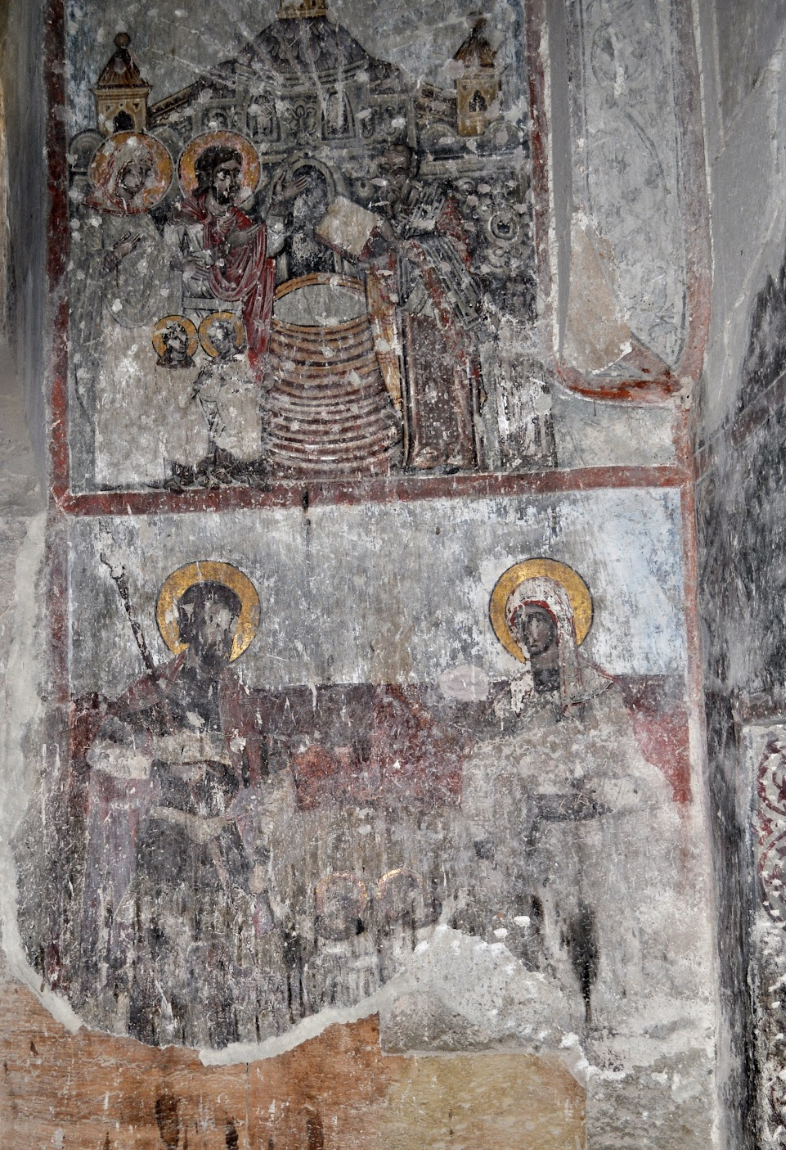
Feel free to add tags, names, dates or anything you are looking for


The Church of St. Eustace stands in the middle of the village of Ertatsminda, within a large courtyard that is encircled by a stone wall. The toponym Ertatsminda derives from Estatetsminda, which in Georgian means St. Eustace.

Ertatsminda Church viewed from the south-east
The architecture of Ertatsminda Church dates from the mid-thirteenth century. It is built of large carefully hewn blocks of yellow sandstone. The building has an inscribed-cross plan, with its dome resting on the corners of the apse wall projections to the east and two piers to the west. Pendentives serve to transition from the square central bay to the circular base of the dome. A small portrait of a mason holding a hammer in his hand is located on the north-western pendentive.

Interior of the church looking east
The exterior of the church is richly decorated. All four façades feature framed double windows with large crosses between them, all of which are adorned with stone-carved ornaments.

Decorative detail on the western façade
The eastern façade has two deep symmetrically placed niches that are covered with conical vaults and decorated with trefoil scallops. The niches are framed with blind arches. A sculptural depiction of St. Eustace hunting and a stag can be seen on the impost of the left arch.

Sculptural image of St. Eustace
Ertatsminda Church was restored several times. Its dome and plain cylindrical drum with eight narrow windows date from the early 15th century. The façades were repaired in the late 19th century.

The church dome
According to an inscription placed above the door of the prosthesis (the altar), the interior of the church was painted in 1654, during the reign of King Rostom and Queen Mariam, by Meletios – a monk from the Georgian Monastery of the Holy Cross in Jerusalem. Among the preserved fragments of the murals, scenes from the lives of St. Eustace, the patron saint of the church, and St. George are depicted on the northern wall.

Wall painting in the interior
In the late Middle Ages and early modern times, Ertatsminda was believed to be a church possessing miracle-working powers. Scores of sick people from all over the country would come here hoping to be healed. The church is also well-known owing to its connection with Giorgi Saakadze – a controversial dignitary and military commander. The head of his son Paata, who was beheaded in 1625 by Shah Abbas II of Iran, was buried at the church. Up until the late 19th century, the church served as a burial place for the Tarkhan-Mouravi family –descendants of Giorgi Saakadze.